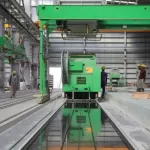In an increasingly data-driven world, data analytics is one of the most important tools you can use to keep your business running smoothly.
Predictive maintenance is particularly useful for avoiding costly downtime and keeping your customers happy. Keep reading to learn more about predictive maintenance and data analytics and how they can help your business.
What Is Predictive Maintenance?

Predictive maintenance is a field of predictive analytics that uses data collected from sensors on machines to predict when a particular component will fail. This allows companies to schedule repairs and replacements before the component fails, preventing unexpected downtime and reducing the cost of maintenance.
Predictive maintenance is often implemented through the use of sensors that track various operating parameters of machines, such as temperature, vibration, and oil pressure.
These sensors generate large amounts of data which must be processed to extract meaningful predictions about equipment health. The benefits of predictive maintenance include improved operational efficiency, reduced costs, and increased safety.
The History of Predictive Maintenance
The term “predictive maintenance” was first coined in the early 1990s by IBM researchers who were working on a project to improve the reliability of large computer systems.
The project involved installing sensors on key components to track their condition in real-time. By analyzing the data collected by these sensors, IBM was able to predict when individual components would fail and develop strategies for avoiding or minimizing failures.
Since then, predictive maintenance has become a popular tool for businesses in a wide variety of industries. In many cases, it is used in conjunction with other forms of predictive analytics such as machine learning and artificial intelligence.
Predictive maintenance can be used to predict not only equipment failures but also changes in demand or other factors that could impact business operations.
Benefits of Predictive Maintenance
First and foremost, predictive maintenance can help organizations save money. By catching small problems before they turn into big ones, companies can avoid costly repairs and replacements.
Predictive maintenance can also help organizations become more efficient and productive. By identifying and addressing mechanical problems before they cause downtime, organizations can keep their machines running smoothly and avoid lost production time.
In addition, predictive maintenance can help organizations improve their safety record. By catching potential mechanical failures before they occur, organizations can avoid accidents and injuries.
Predictive maintenance is also a valuable tool for improving customer service. By keeping their machines running smoothly, organizations can avoid delays and keep their customers happy.
Finally, predictive maintenance can help organizations better understand their equipment. By analyzing data from past failures, predictive maintenance can help organizations identify patterns and trends in their equipment, which can help them improve their products and services.
Measuring the Success of Predictive Maintenance
Predictive maintenance relies on data analytics to predict when equipment needs to be serviced or repaired to avoid potential failures. Data analytics is the process of extracting valuable insights from data sets to make better decisions.
To measure the success of predictive maintenance, one must first understand the goals of the organization and then use analytics to track how well those goals are being met.
One goal of predictive maintenance is to reduce costs. Organizations can use analytics to track how much money they are saving due to preventive maintenance rather than reactive maintenance. Another goal of predictive maintenance is improving safety.
Analytics can also help organizations keep track of the number of accidents that have been prevented due to preventive maintenance measures.
Finally, organizations can use analytics to track customer satisfaction levels. This can be done by measuring things like uptime and downtime for machines, as well as cycle times for products.





